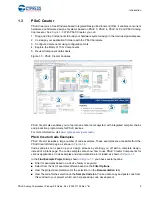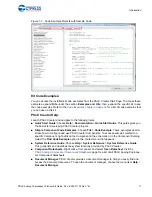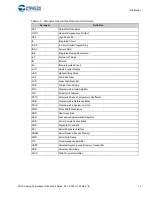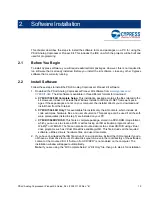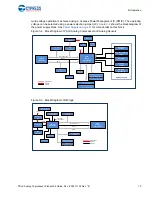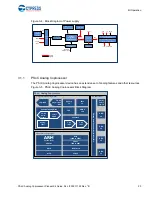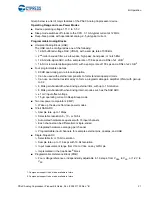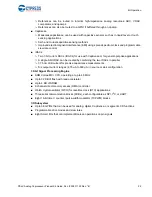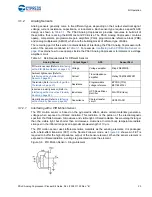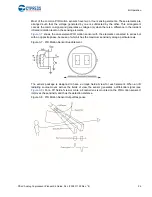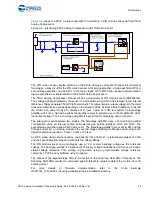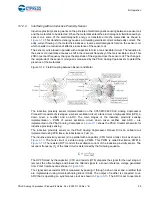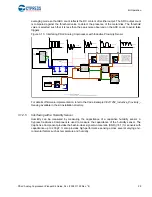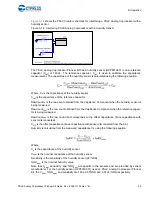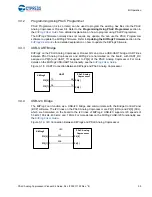
PSoC Analog Coprocessor Pioneer Kit Guide, Doc. # 002-11190 Rev. *B
21
Kit Operation
Given below is a list of major features of the PSoC Analog Coprocessor device.
Operating Range and Low-Power Modes
■
Device operating voltage 1.71 V to 5.5 V
■
Sleep mode switches off clocks to the CPU. 3.1 mA typical current at 12 MHz.
■
Deep-Sleep mode with operational analog. 2.5 µA typical current.
Programmable Analog Blocks
■
Universal Analog Block (UAB)
The UAB can be configured as one of the following:
❐
12-bit buffered voltage DAC (VDAC), with a sample rate of 500 kHz
❐
2
nd
-order bi-quad filter, as a low-pass, high-pass, band-pass, or notch filter
❐
12-bit delta-sigma ADC, with a sample rate of 7.8 ksps and a DNL of ±1 LSB
1
❐
14-bit incremental delta-sigma ADC, with a sample rate of 100 sps and a DNL of ±2 LSB
2
■
Four programmable opamps
❐
90 dB open-loop gain, rail-to-rail operation
❐
Can be used with external components to form standard opamp circuits
❐
Can use an internal resistor array to form a programmable gain amplifier (PGA) with gain up
to 32
❐
6 MHz gain-bandwidth when driving external I/Os, with up to 10-mA drive
❐
8 MHz gain-bandwidth when driving internal nodes such as the SAR ADC
❐
±1 mV input offset voltage
❐
15 µA operating current in Deep-Sleep mode
■
Two low-power comparators (CMP)
❐
Wake up the device from low-power modes
■
12-bit SAR ADC
❐
Sample rate up to 1 Msps
❐
Selectable resolution 8-, 10-, or 12-bit
❐
Automated hardware sequencer with 16 input channels
❐
Each channel can be differential or single-ended
❐
Integrated hardware averaging per channel
❐
Programmable input channels, for example external pins, opamps, and UAB
■
Single-Slope ADC
❐
Selectable 8- or 10-bit resolution
❐
Sample rate up to 11.6 ksps with 10-bit resolution
❐
Input measurement range from V
SS
to V
DDA
on any GPIO pin
❐
Implemented in the CapSense
®
block
■
Programmable Reference Block (PRB)
❐
Four voltage references, independently adjustable in 16 steps, from V
DDA
to V
SS
, or 1.2 V to
V
SS
1. Component support to be made available in future.
2. Component support to be made available in future.



